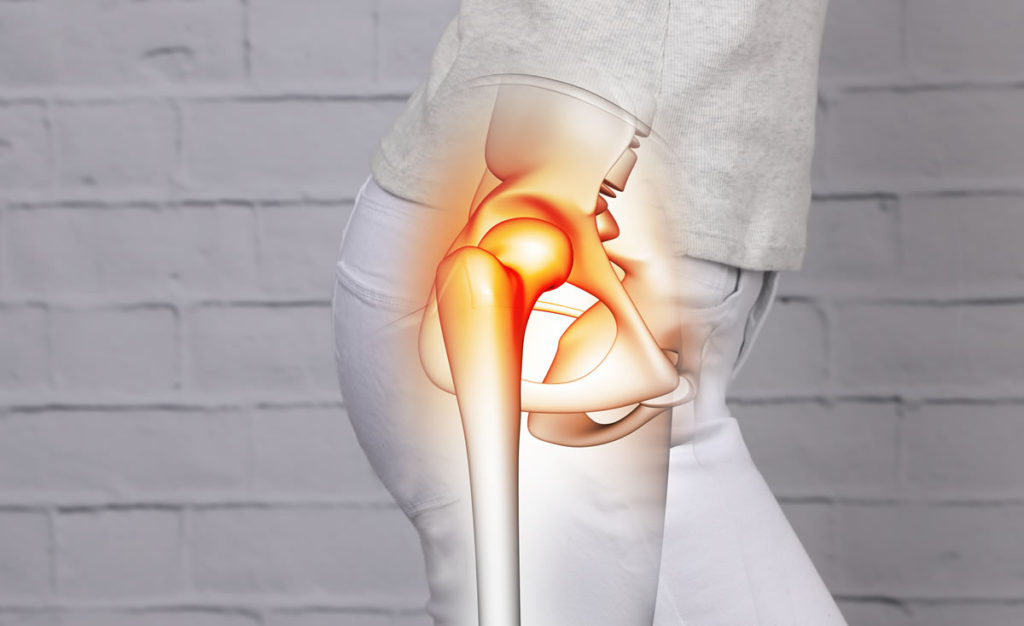Struggling with Hip/Pelvis pain?
At Recover Physio we use physiotherapy to treat a number of problems.
We aim to remove your pain without injections and without painkillers. We want to see you enjoying an active and pain-free life again in the shortest time possible.
Hip pain is not just felt in the hip itself. You may feel pain in the groin, lower back, or legs or from the muscle of the hip joint itself. This is ‘referred pain’, which is where pain experienced in one area of the body is actually generated in another region. It is important that referred pain is diagnosed correctly.

Other related signs of hip problems, that should not be ignored:
1
Hip pain that persists beyond a few days
2
Hip pain that occurs at night, or while resting
3
In the past you’ve tried other healthcare professionals, or even a Physio.
4
Swelling of the hip or the thigh area
Groin pain
Pain from the hip joint is often felt in the groin. This may feel like a tightening or throbbing in the inner thigh. Pain over the outside of the hip is usually not caused by a hip joint problem, but is more commonly related to hip bursitis or caused by a trapped nerve in the lower region of the back.
Lower back pain
One of the most common hip pain symptoms. Pain in the hip can cause trapped nerves and therefore result in lower back pain, which is typically a dull throbbing pain. If left untreated it can severely limit mobility.
Leg pain
Leg pain can be caused by problems within the hip joint. For example, groin pain that originates from the hip can travel down to the thigh or knee. This may produce a sensation of leg weakness or tingling. If leg pain persists, it should be medically examined to determine the actual cause.
Stiffness and grinding
These are typically symptoms of hip arthritis, which is a wearing away of the normal smooth cartilage within the hip joint. This can leave bone to grind against bone. Stiffness can also be experienced by patients who have childhood conditions that cause an abnormally shaped hip joint, such as Congenital Hip Dislocations (Dysplasia), or Legg-Calve-Perthes Disease.
Limited motion of the hip
Limited motion of the hip in normal activities can result from a damaged or deformed hip joint. For example, the degenerate bone and subsequent related pain from hip osteoarthritis often makes it painful for a person to carry out the full range of hip movements. Some patients may have difficulty bending their hip to put on socks or shoes, or lifting the leg to walk upstairs.
Walking with a limp
People with hip problems often find they are unable to walk comfortably and may experience sharp pains with each step, causing them to walk with a limp. These symptoms require attention to help prevent further problems.
Painful clicking sensation in the hip
Painless clicking sensation in the hip joints is often not associated with any significant medical conditions. However, painful clicking is often due to orthopaedic conditions affecting the tissue within, or just outside the hip joint. The clicking sensation is usually noticed during hip movements and this symptom should be fully assessed by a specialist hip surgeon, for an accurate diagnosis and treatment.
If you can’t quite put your finger on what your problem is and where the pain is coming from in your hip, then you are not alone. We see this kind of problem all the time.
“Why me?”
“Why is my pain not getting better?”
“Why is my pain getting worse even though I am resting?”
Many people hope that one morning they will wake up and find their pain has disappeared and their debilitating condition is a thing of the past! The reality, unfortunately, is that this rarely happens.

